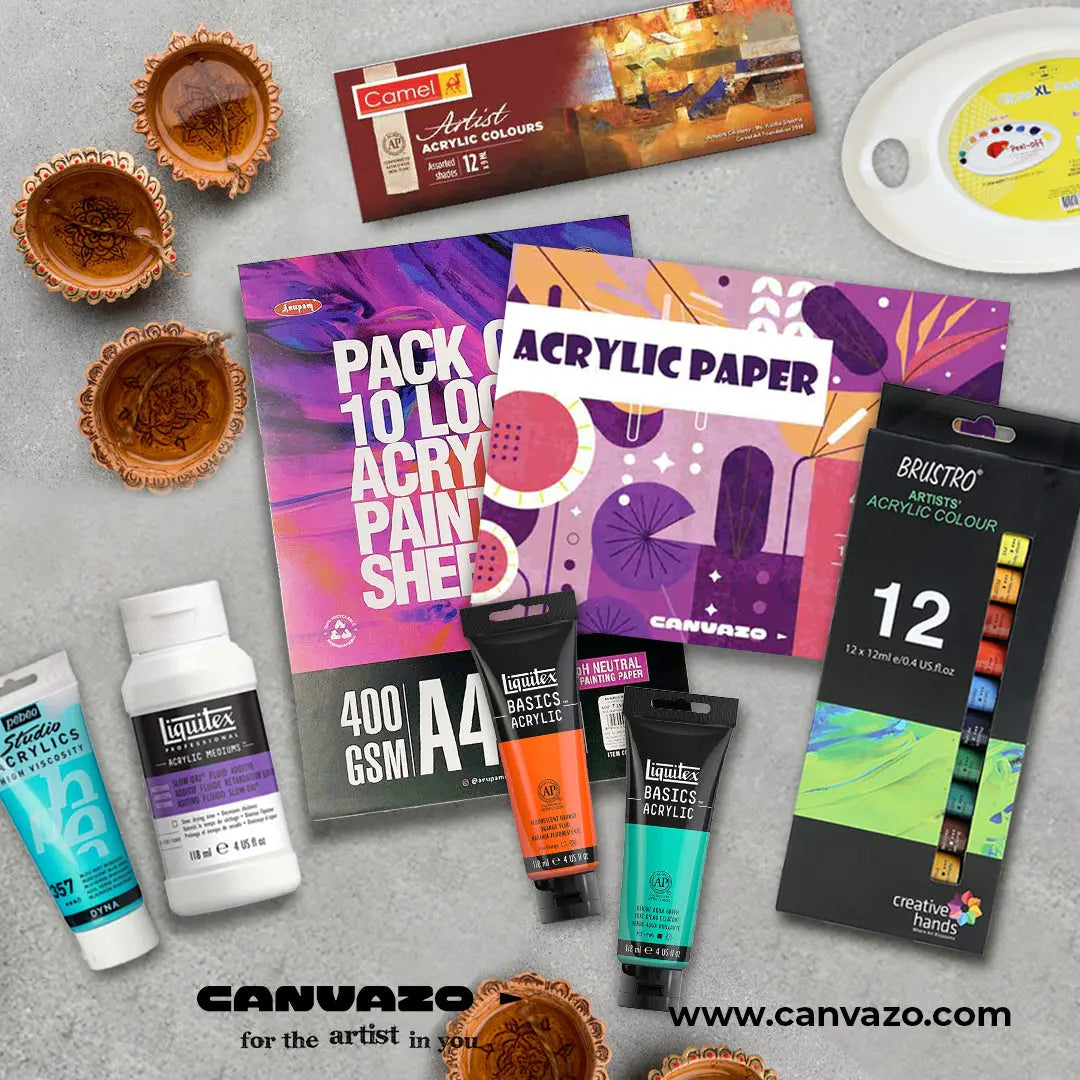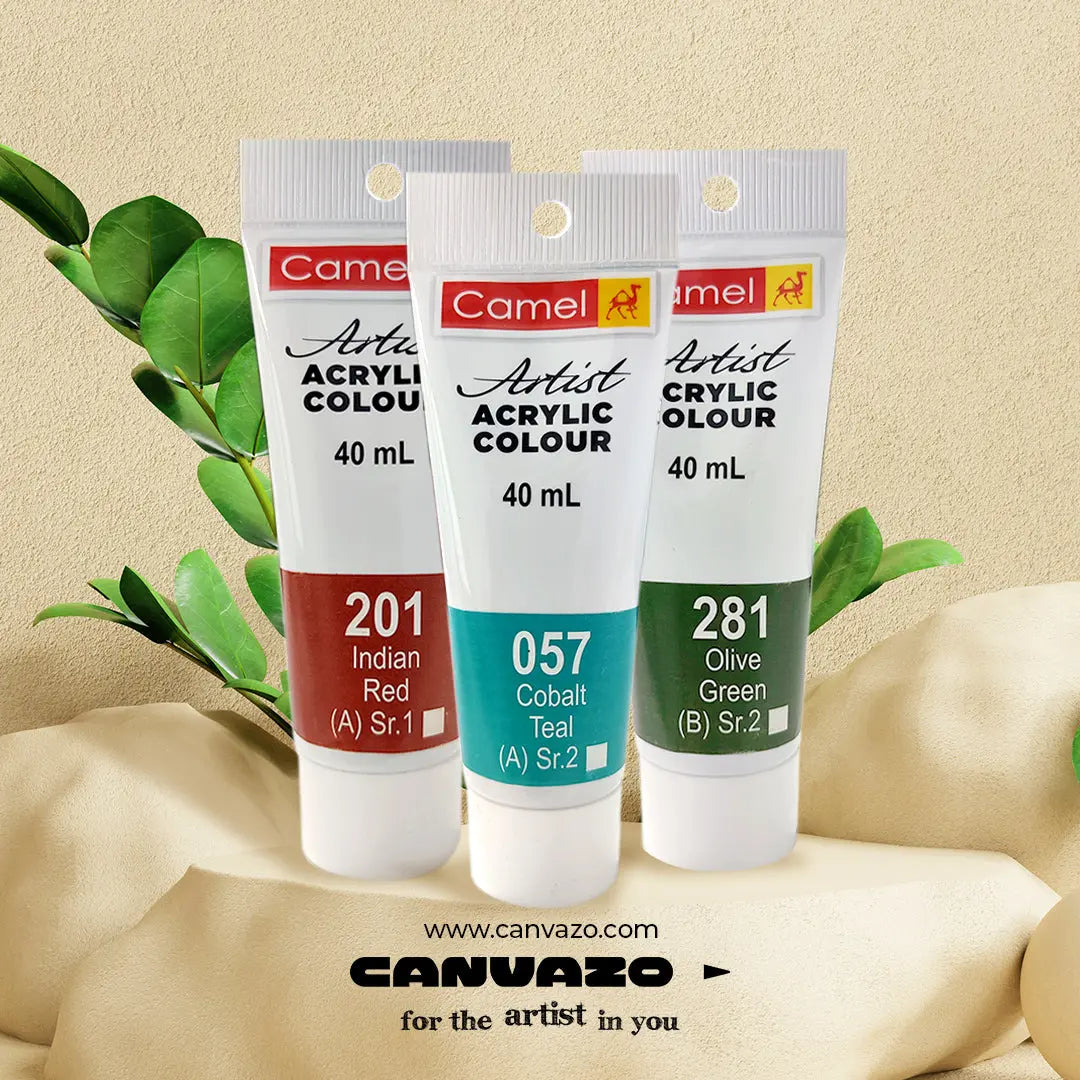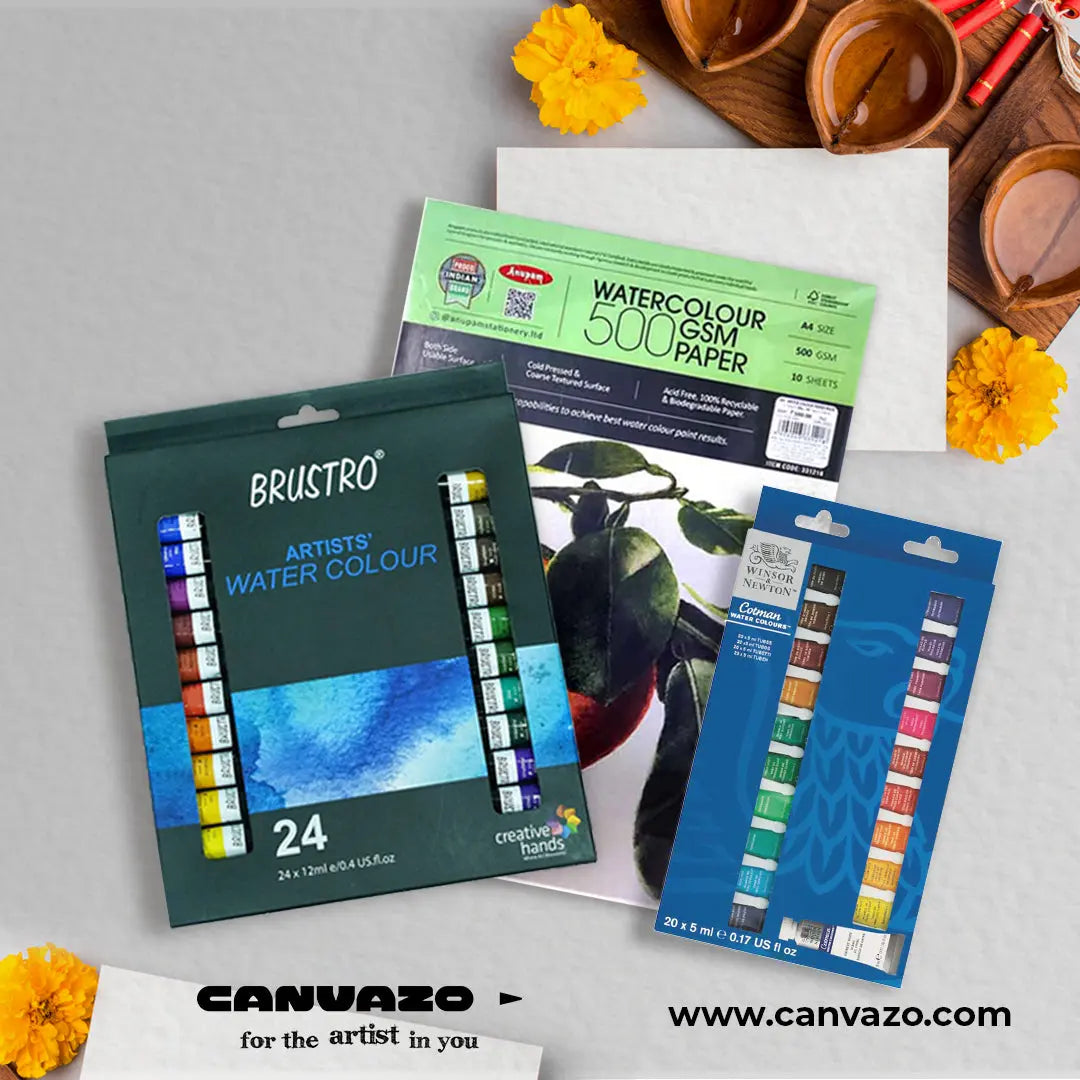Before learning how to create with acrylics, it's vital first to explore what acrylic painting is and how it varies from other mediums. "Acrylic paints set are pigments embedded in an acrylic polymer medium that is liquid while wet but becomes liquid when dried." Using acrylics has many benefits over working with other media types, including quick drying, simplicity of clean-up, lack of odor, and richly saturated colours that may be quite vivid and brilliant.
Acrylic paints dry quickly in contrast to colour, which may take a day or more to cure fully. It's a highly enticing medium for novices since, unlike oils, you may keep painting over the dry portions without seeing any errors. The following are some other crucial details concerning acrylic paints: They often dry a deeper shade than that of the pigment they display while wet, need not spread (unlike watercolours or gouache), and dry rapidly (which has benefits but may make blending challenging), are water-soluble while wet & water-resistant while dry, meaning they cannot be changed once dry. The appeal of work using acrylics is they are reasonably priced and simple to use yet can produce remarkable effects in the hands of a creative person.
How & Where to Paint with Acrylics: A Simple Beginner's Guide
Acrylic painting must typically follow the same structure, while there is considerable flexibility in the stage process instructions below. This is due to, as was already noted, oil or watercolour paints being more forgiving and flexible than acrylic paints.
-
Prepare the Painting Station.
Establish your easel and materials in a calm or outside area of your house. "Put your canvases on the easel, a rag and paper towel on the palettes, and a solid cup with your brushes close Whether you're a left or right-hand user, all of them should be positioned accordingly. You should use a tarp, old rugs, or rubbish bags to protect the floor under you if you're indoors.
-
Use Your Materials to Experiment & Practice.
Knowing your medium is the first stage in mastering a particularly creative form. Specifically, acrylic painting entails understanding how the paint applies, dries rapidly, settles on your chosen canvas, and interacts with other colours. Even additional items that impact all of those mentioned above may be tested.
Various solutions are available to 'stretch' the painting or adjust the texture and sheen, making the paint heavier for a more multidimensional impression and even shifting from a smooth finish to glossy. The author continues that most acrylic paints may also be used directly from the tube and diluted in various amounts with water.
Here are a few practical suggestions on how to work with acrylic paints & explore. Each task is brief and will help you feel more competent and confident as you advance:
Exercise #1:
Sample all of your acrylic paint colours on a canvas to understand their opacity levels, drying times, and application characteristics.
Exercise #2:
While carrying out this task, feel free to use any modifying items Griffin described above to observe how it affects each swatch. You may also test how water changes the opacity and consistency of the paints. Put off altering goods if such a step overpowers you.
Exercise #3.
Construct tones starting with black top and white This will help you understand how well the paints interact with one another. Make a rough sketch or conceptualize your painting in the third step.
You should conceive your artwork before placing the brush on paper. This may be just having an idea of what you wish to paint in your brain, or it can take time to lightly sketch out the picture with a pencil or piece of charcoal.
If you're a "truly representative" artist (i.e., a flower should look like a flower), you might produce a sketch and a below that help with the arrangement of the paint. "Put another way, 'Plein air' drawing is painting straight from experience, freehand, and so as you perceive it."
If you want to sketch first, many painters use digital tools to model their ideas and experiment with different colour schemes before really beginning the painting. Some people may not benefit from this method, but if you believe it would be helpful, go for it.
Exercise #4.
It would help to start creating your first acrylic painting to finish the process. We advise keeping to just a few colours if you still need to decide about jumping in; if you're feeling brave, go ahead and use as many hues as you like.
Following are some basic guidelines for acrylic painting:
Move up in colour intensity from mid- to light-toned shades. Use the bigger mid-tone initially, add darker undertones for depth, and place highlights at the end. A mid-tone allows you to talk about form and form, while the deeper tones provide depth, and the brighter hues show where the lighting falls. Moving through to work is a juggling act.
Start with broad outlines and work your way down to finer details. Instead of going in the other direction, it is far simpler to go back across your more significant designs and add tiny details. It would help to genuinely consider how the painting "comes into focus" as the work.
Keep in mind how rapidly acrylics dry. Accordingly, most of your mixing should be done on your palettes before it touches the canvas. To buy yourself more time, you may use a sprayer to mist your colours as you work to keep them damp. You may learn more about how acrylic applies & dries by doing the activities in step one.
No big deal if your initial painting didn't completely blow you away. You'll need help finding a novice who produces a masterpiece immediately. There are many more exciting things for you when you go on your acrylic adventure after this. Follow your heart if you want to paint using tubes of acrylic paint, big or tiny, indoors or outside, for fun or profit.
Having learned the fundamentals, it's time to develop your style.



